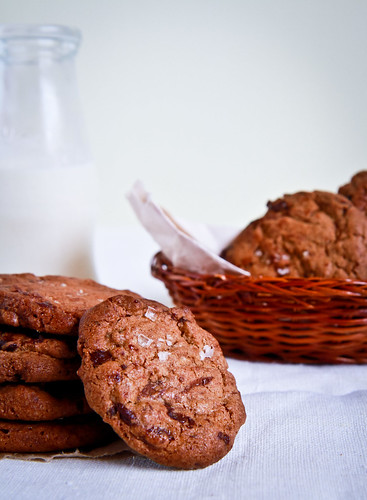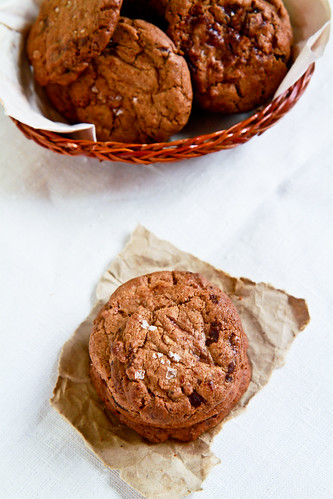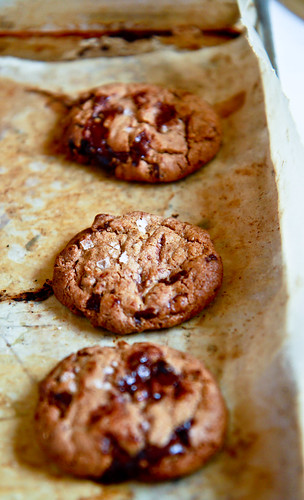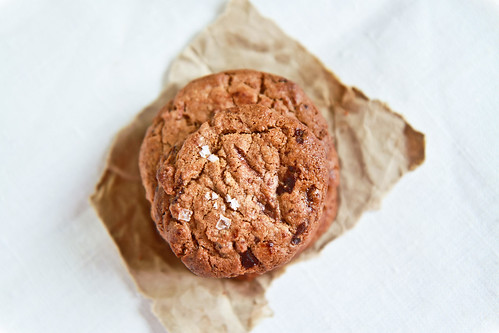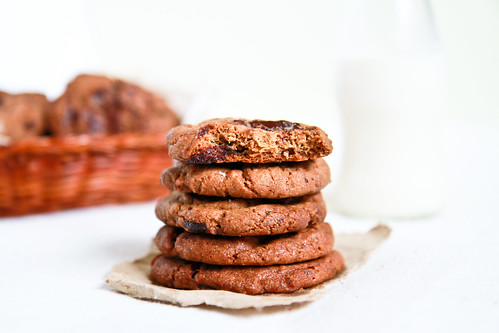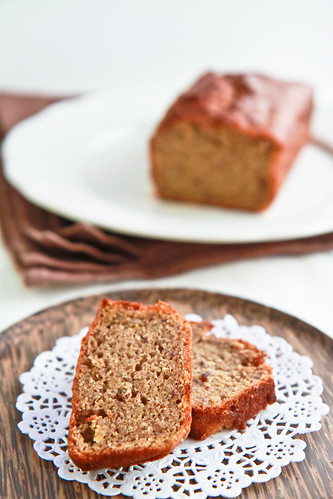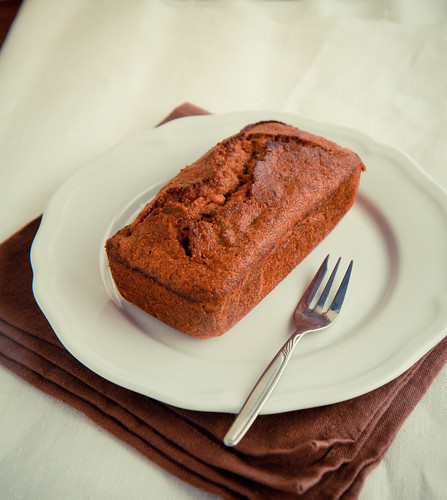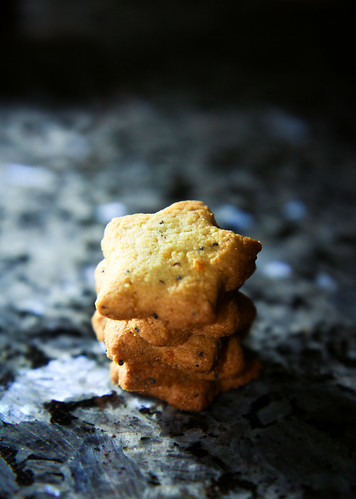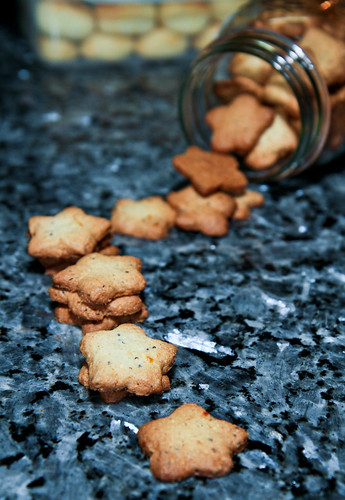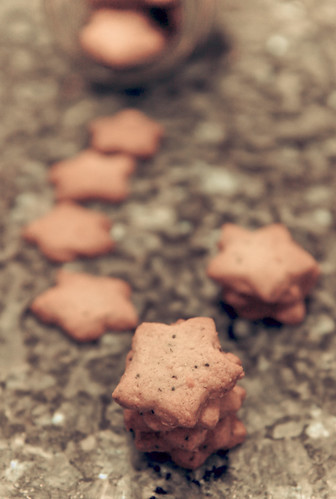Finally the third instalment of Thursday's Trio! As you might have discovered, I find it rather hard to stick to a schedule - as you might or might not have realized, I have not done my Travel Tuesdays for a long long time (the last one was about Phnom Penh in June 2011) and neither have I completed my A to Z of Australia series either. In fact, I'm only at the letter E (for Eveleigh Markets), and since starting the series, I've been to Australia at least three other times. Oops.
In any case, I'm trying hard to make Thursday's Trio a monthly thing because I've gotten feedback that it's really helpful for some of you and I love reading up and researching on such things anyway. I previously talked about buckwheat and sorghum and today, I touch on millet.
Millet is often associated with bird seed, because well, it is part of bird food. It is tiny in size, and can vary in color, from white to gray to yellow to red. Technically, millet is a a seed and not a grain.There are many varieties of millet, the most popular being finger millet and pearl millet. In fact, teff is actually a type of millet as well – Ehtiopian millet. If I'm not wrong, the yellow colored millet grains that we see in supermarkets and organic food stores in Singapore and Malaysia are pearl millets.
Similar to sorghum, millet is a staple in some parts of Asia (it apparently originates from China) and Africa, and it is very drought-resistant. Added to that is its short growing season – it can develop from a seed into a ready-to-harvest plant in less than 70 days! I guess this is yet another reason why it is grown in lands with low fertility and dense population.
- Did you know that millet is even mentioned in the Bible as an ingredient for unleavened bread! (See Ezekiel 4:9)
- Remember the 5th most important crop sorghum? Well, millet is the 6th most important grain crop and it is actually related to sorghum!
- Millet is a good source of magnesium and phytochemicals, which helps lower high blood pressure and reduce heart attack and cancer risk. Studies have also shown that the insoluble fibre in millet also helps women avoid gallstones and protects against breast cancer! I personally enjoy millet because it is non-glutinous and is not acid forming, which helps with my digestion and gastritis.
Three ways of using millet
- Think of millet as similar to rice, and you can imagine just how many ways you can use it. It can be used as a flour, a grain, puffs or even flakes!
- You can also eat millet ‘fried rice’ – it tastes exactly like rice, just that it’s ‘shorter grained’. Cook millet as you would rice and you're set! Or cook it with more water and you can eat it as a porridge - sweet or savoury it's all up to you!
- Use whole millet to add an extra crunch to your muffins (think of it as large poppy seeds), bread, pancakes and even cookie recipes. I like it in my granola :]
Three interesting recipes I’ve bookmarked from blogs
- Tartlette's Strawberry Jelly Roll Cake (with rice and millet flour only)
- Aran's gluten-free lemon, pistachio and millet tea cakes
As with other grains/seeds, millet can last for quite a long time (two years) if properly stored. The whole seeds can be kept together with your rice or in a closed container in a cool dry place. The flour becomes rancid very rapidly after it is ground, therefore, do place the flour in the refrigerator, especially in our warm, humid environment.
I'm calling these the 36-hour chocolate chip cookies because making these cookies take at least 36 hours! After making the cookie dough, you have to allow the dough to rest in the fridge for at least 36 hours (find out why here) before taking it out to bake into morsels of heaven :]
I actually baked both the normal wheat version and gluten-free version at the same time, and conducted a tiny experiment. Those cookies which were baked a day after making the dough (ie, less than 24 hours) did not taste as chocolatey as those which were baked at least 36 hours later. As for the gluten-free and wheat versions, most tasters could NOT even tell the difference! And mind you, I gave the cookies to friends, relatives and colleagues! Some actually said that the gluten-free version was crispier and far more tasty than the wheat! I personally think so as well! So there you have it - baking gluten-free does not necessarily mean compromising on taste and texture - as long as you get your proportions right, it'll taste as good or even better than normal!
The recipe below is actually a halved version of the usual, do feel free to double the amounts - I tried out this recipe 3 times, making variations each time and I find myself liking this combination of flour and sugar the best. Do check out more detailed notes below.
36-hour Gluten-free Chocolate Chip Cookies
Adapted from David Leite's Ultimate Chocolate Chip Cookies (also known as the NY Times cookies) and sighted at Tartlette who adapted it from Shauna
50g sorghum flour
30g white rice flour
50g millet flour
30g glutinous rice flour
15g buckwheat flour
15g hazelnut flour
10g cornstarch
(240g of flour in total)
2 teaspoons flaxseed, ground
2 teaspoons water
1 teaspoon cocoa powder
(OR 1 teaspoon xanthan gum)
¾ tsp baking soda
1 tsp baking powder (make sure it does not contain wheat)
¾ tsp sea salt
140g butter
110g brown sugar
90g white sugar
30g egg (about ½ an egg )
1 tsp vanilla extract
130g chopped chocolate (semisweet, or about 60-70%)
Sea salt, to taste
Method:
- In a small bowl, combine the ground flaxseed and cocoa powder together with the water and set aside.
- In a separate large bowl, whisk all the flours and starches together with the baking soda, baking powder and sea salt. Whisk in xanthan gum if not using the ground flaxeed combination.
- In the bowl of an electric mixer fitted with the paddle attachment, beat together the butter, brown sugar and white sugar on medium speed for 2 minutes until light and fluffy. Add in the egg and vanilla extract and beat until well incorporated. Beat for at least 1 minute. By now, the flaxseed-water mixture should be quite gelatinous - add it into the mixture and beat until incorporated.
- Add in the flour mixture into the batter in 2 batches, making sure that all the flour is incorporated before adding the next batch.
- Add in the chopped chocolate (and nuts if you desire) and mix briefly to incorporate.
- Then, scoop your preferred size of dough balls before placing into an airtight container to refrigerate for at least 36 hours. Alternatively, you can weigh your dough balls (my large ones were about 35g and small ones about 12g) OR you can refrigerate the dough and scoop them right before baking.
- When ready to bake, preheat the oven to 170°C and position a rack in the middle of the oven and line the baking sheets with parchment paper or a non-stick liner. Arrange the large dough balls about 3 finger spaces apart and sprinkle the tops with sea salt.
- Bake the cookies for about 15 minutes, or until they are golden brown and the sides are set. Allow the cookies to cool for at least 15 minutes before transferring to cooling racks.
Janine's jots:
- Note: If you want crispy cookies, do make the cookies small (about 10-15g) and remove them from the fridge at least 15 minutes before baking to allow them to soften slightly. Flatten them before baking and you will get nice crispy cookies, reminiscent of Famous Amos (I didn't say this - my brother did). Bake those cookies for 15-20 minutes - not only the sides but the centre of the cookie should be almost set before removing them from the oven. Conversely, if you prefer the thick chewy cookies a la Subway, portion large cookies (at least 35g in weight or an ice-cream scoop size) and bake them the moment you remove them from the fridge. The dough ball will gradually soften in the oven and remain thick. Once the sides have set (but the centre is still soft), remove them from the oven. They should take about 15 minutes or so.
- Taste: Absolutely delicious. As stated above, I found the gluten-free cookies far more complex in taste than the normal ones - I could vaguely make out the taste of millet and hazelnut, which complemented the chocolate really well, without any addition of chopped nuts. This is definitely THE COOKIE to make when you want to introduce different flours into your diet and if you want to fool unsuspecting victims because they won't know that they're not eating gluten-free products!
- Texture: I made a batch using xanthan gum and another without, and I found myself preferring the texture of the one without because the after-taste is less 'slimey'. Then again, that batch had more tapioca starch in it, so that could be one of the factors as well! In any case, this cookie dough is extremely versatile and can be used to make crispy OR chewy cookies - just vary the baking times and baking method :]
- Serving size: Depending on size, the recipe above can make at least 3-4 trays of cookies. I made at least 100 small cookies with a single batch.
- Modifications: For those who might be allergic to nuts as well, simply substitute the hazelnut powder for arrowroot starch or any other type of flour. Also, as indicated in the recipe, flaxseed can be replaced by xanthan gum and it is actually a substitute for egg as well. Feel free to increase the flaxseed amounts to 1 tablespoon to replace the egg in the recipe. The cocoa powder is added to mask the taste of flaxseed because sometimes ground flaxseed can taste nasty.
- Storage: Store the unbaked cookie dough in the fridge for a maximum of 3 days before baking. Store in the freezer for up to 2 weeks although I wouldn't recommend this if you have egg in the dough. For baked cookies, store in airtight containers and they'll last really long! Don't store the chewy and crispy ones together though, because the crispy cookies will turn soft.
- Would I make this again?: DEFINITELY YES!!
And finally, please note that I don't profess to be a gluten-free expert, although I have read up quite a bit on it. Most of my recipes do have gluten because I don't need to eat gluten-free, although I find it interesting as an alternative diet. Should you be a coeliac sufferer or are gluten-sensitive, please do be aware of some common pitfalls below:
Important notes for gluten-free baking in your kitchen
- Do make sure that all the flours you use are certified gluten-free, or it is stated on the label that the flour product is processed in a mill which does not process other types of gluten flour. To be safe, you can opt for Bob Red Mills' which is gluten free or some types of flours sold in organic food stores.
- Do make sure that the baking powder you use is gluten-free as well because some, if not most, baking powders contain wheat as one of the ingredients. You can buy a gluten-free baking powder OR you can simply make it yourself by using mixing baking soda, cream of tartar and arrowroot starch.
- Another source of gluten is in the chocolates. Make sure again that the chocolate you use is of good quality, and the label on it states that it does not have any wheat products or it is not processed in a factory which processes wheat or gluten products.


